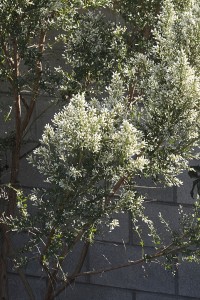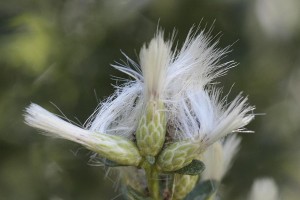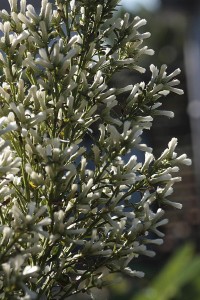The coyote bush (Baccharis pilularis) that I grew from wild-collected seed a few years ago is now a pretty major heap of greenery, something on the order of ten feet tall and even wider. The plant is a reliable, bright green, informal background shrub that asks for almost no water. Insects appreciate its late-season flowers for nectar when few other natives offer nectar on the menu.
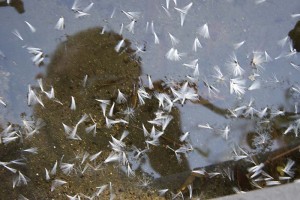

Coyote bushes are either male or female, though almost all cultivars sold in nurseries are male plants, for reasons about to become obvious. Also, the most commonly-grown versions of this plant around here are the low-mounding groundcover forms like ‘Pigeon Point.’ My plant is a female, and beginning in November or so it also puts out an enormous quantity of seeds that are attached to a fluffy white structure called a pappus. The plant makes so many of these seed structures that the branches look like they’re covered with snow. And when the wind blows, these seeds float poetically on the breezes the way dandelion seeds do. (Both the dandelion and coyote bush hail from the ginormous daisy family of plants.) But the poetry stops and the cursing begins when the seeds land and you have coyote seedlings everywhere in the garden. I kid you not when I say that I pulled well over a thousand of these seedlings from around the garden just this past spring. These things are prolific.
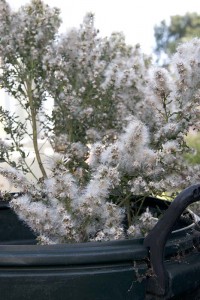
The last couple of years I’ve been giving the plant a good trimming before the seed production gets too out of hand. I didn’t get to the task this year until a week ago, after the plant had already begun broadcasting its seed. Doing it in early to mid-November would have been ideal. The plant doesn’t mind the haircut, and by the beginning of spring you can hardly tell the plant has been pruned.
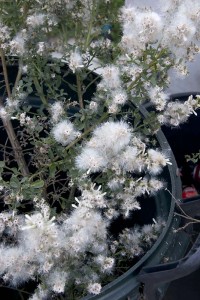
We can let wild plants into our gardens, but we often exert at least some level of control to make “nature” conform to the needs of a city garden. Now that I’ve lived with the mess and maintenance the last few years, I think that it’s time to pot up a half dozen or so seedlings and select for a male plant to replace this gloriously messy female. I’ll miss the late-autumn “snowfall,” but not the pruning and weeding. Sometimes what works really well in nature doesn’t transition so well into our little cultivated plots of land.

